Kent State Today will be following a group of Golden Flashes for the 2025-26 academic year, chronicling their efforts and successes during the fall and spring semesters. The group of students is at various stages in their Kent State University academic careers and will share their experiences as they participate in our distinctive programs, research and campus activities.

“I had the love of science at an early age,” said future Ph.D. candidate Delonte Goodman. Goodman is studying mechatronics in Kent State’s School of Engineering in the university's College of Aeronautics and Engineering and is on track to receive his master’s degree in December. Growing up in a single-parent household in Cleveland, Ohio, he said he loved watching science documentaries, especially about space. While he was still in high school, Goodman completed a two-year internship at NASA and also completed college credit courses at Cuyahoga Community College that allowed him to start at Kent State as a sophomore.
Curating Purposeful Participation and Engagement
Goodman is a former McNair Scholar; he is in the current cohort of Kent State's John and Fonda Elliot Design Innovation Student Fellows Program. He is active in engineering-focused clubs and organizations on campus, including the American Foundry Association, the Society of Physics Students and the KSU Combat Robotics Club. The McNair Scholars Program at Kent State prepares undergraduate students who are first-generation, from designated income or underrepresented groups in graduate schools, for doctoral study. McNair Scholars are engaged in scholarly research, mentored by faculty, and are exposed to varied academic and cultural experiences.
His curated choices of activities are all complementary. “The American Foundry Association is working with cast metals and castings, and then combat robotics, which is mostly being able to build robots, and that requires some engineering and physics knowledge of how you calculate forces,” Goodman said.
He works as a research assistant and is a mentor to several students in the College of Aeronautics and Engineering. He has been the president of the Kent chapter of the Organization of Black Aerospace Professionals as well as the president of the Kent State Pokémon League.
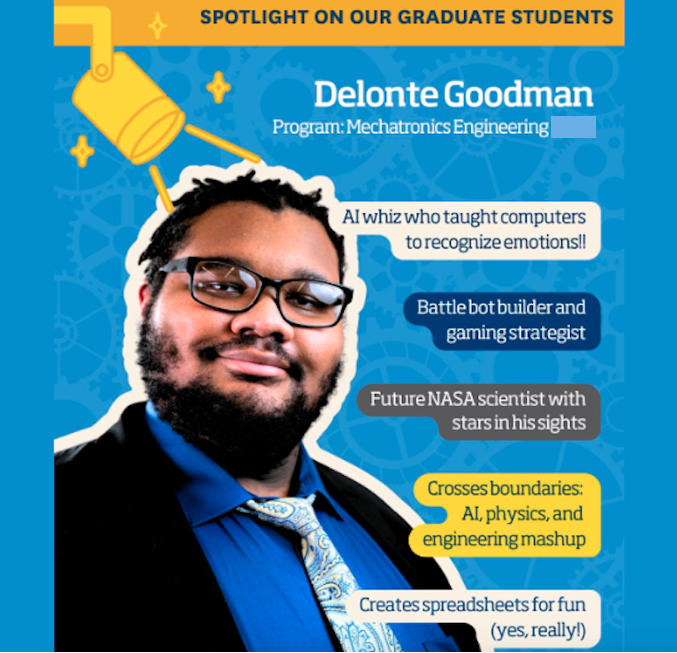
From Mentee to Mentor and SURE Star
Through the McNair Scholars Program, as an undergraduate, Goodman was able to work in research at Kent State’s Advanced Materials and Liquid Crystal Institute for nearly four years. Kent State has earned the prestigious R1 designation, recognizing the university’s high level of research activity. Having so much research being conducted on its campuses allows Kent State students to begin engaging in relevant research activities as early as their first semester on campus. At some other universities, students can’t participate in research until their second or even third year.
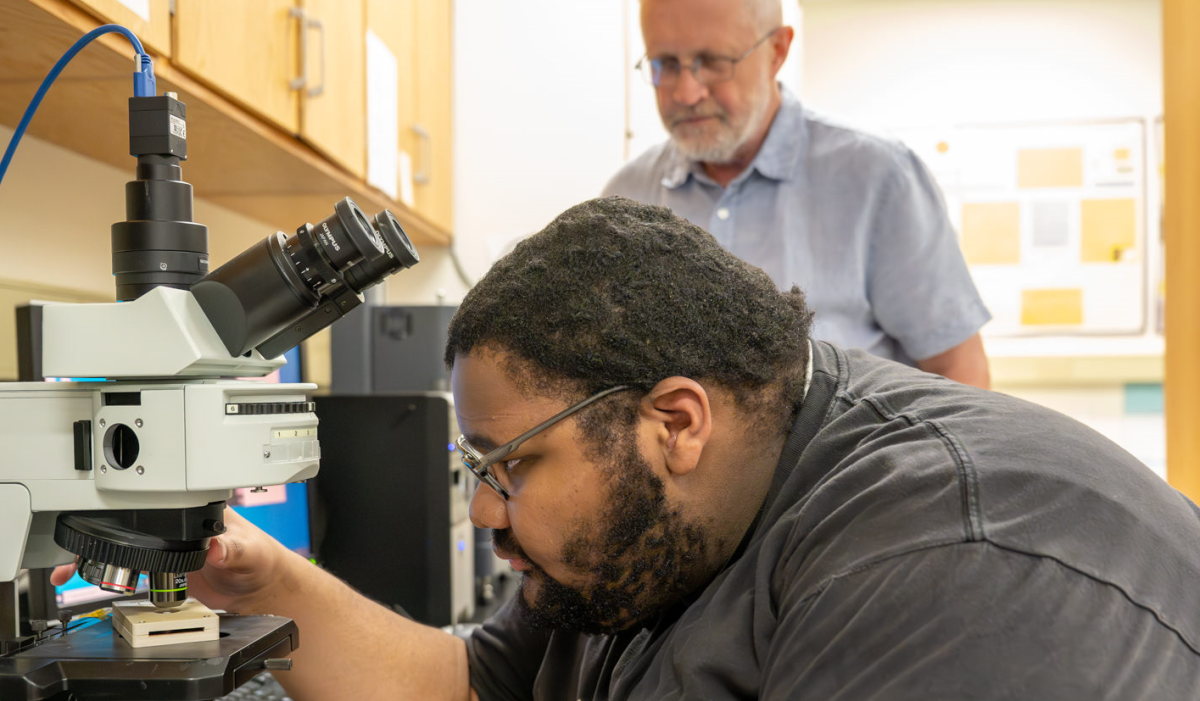
His first research project involved organic electrochemical transistors. Goodman also participated in Kent State's Summer Undergraduate Research Experience, where he studied the properties of a new type of liquid crystals.
He also participated in a mentorship program for underrepresented students, first as a mentee and then as a mentor. “I served as a mentor for four years,” Goodman said. “I met with my mentees, and I basically helped them along in their first year.” He sees helping students as “giving back” to a program that helped him. “I was the first generation to go to college, and it was my first time being away from my mom,” Goodman said. “It helped me to be able to navigate through being a first-generation student and then also not being on a physical campus (during COVID).”
‘Mommy, I want to go to school!’
Goodman’s mother, Cassandra, has always provided support and encouragement to her son. “It was basically just me and her in regard to support,” he said. “She obviously helped me. She took me to places for extracurricular activities when I was in high school and was also willing to sit and stay with me when I needed to go to different classes.”
But when it comes to helping with his classwork, especially now, “to her, it would look like I’m writing in hieroglyphics,” Goodman said. “The math looks like English, and then the English would become math because you’re explaining stuff.”
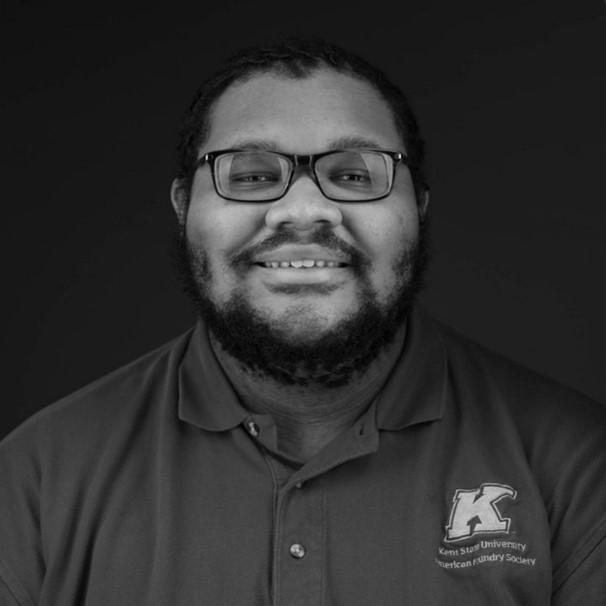
His mother describes him as “my blessing child.” “He was wonderful,” she said. “I never had problems with Delonte; he always wanted to go to school and he just learned.” He was “no trouble,” and “always studying,” she said. “It was strictly schoolwork. When he was a little boy, he said ‘Mommy, I want to go to school!’ And it was on ever since then.”
Goodman’s dedication to studying has helped him attend Kent State on scholarships, which he sought out and applied for. “Delonte did everything,” his mother said, “The only thing I had to do was read and sign because he knew everything he needed to do.
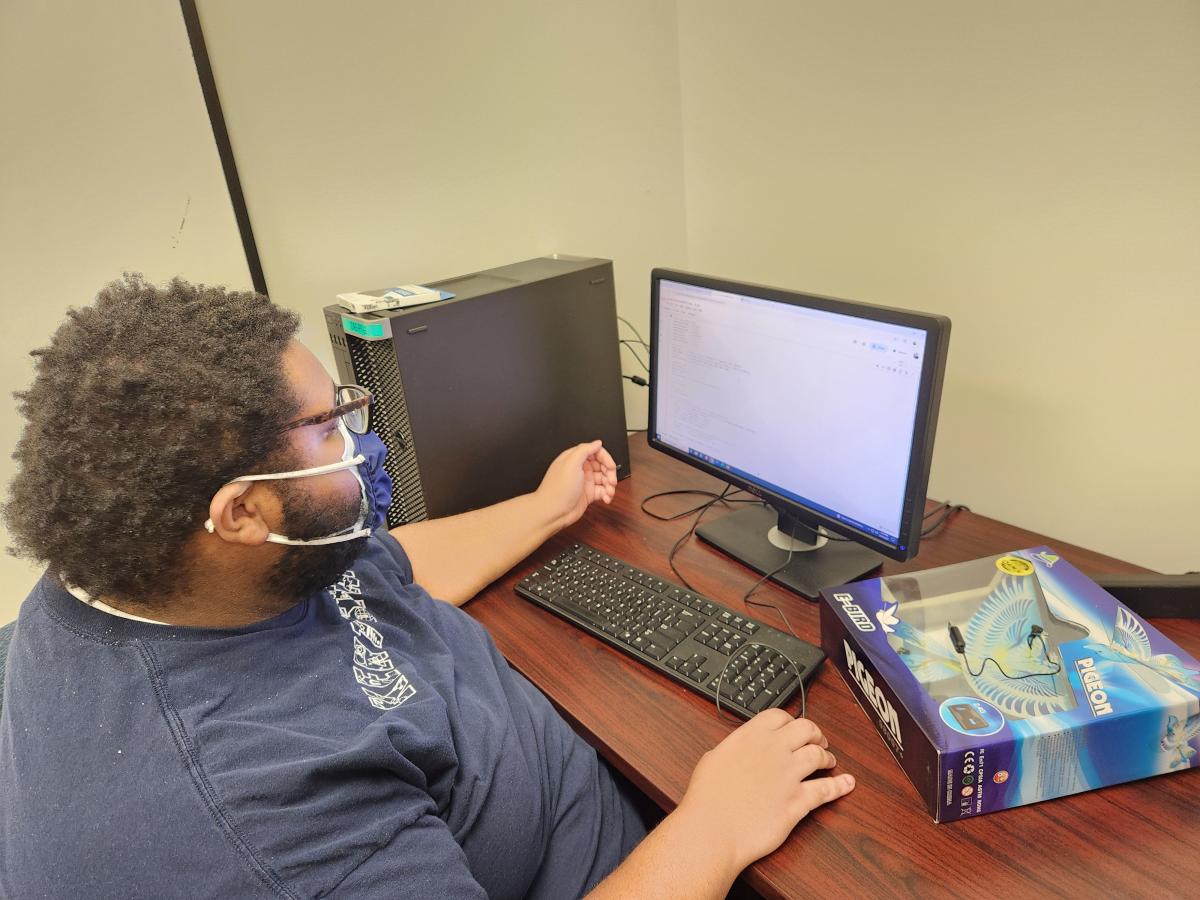
Working With Drones and DI Fellows
One of the scholarships earned by Goodman was for working as a DI Fellow in the John and Fonda Elliot Design Innovation Student Fellows Program. He’s been part of the DI Fellows program at Kent State since it began in 2020. “The DI Fellows is an organization to help foster collaborations that retain different disciplines, participating in activities like hackathons and also offering advice for problem solving,” Goodman said. “For this semester, we also have the DI Fellows challenges or challenge groups. Different clients come to us, ask a question and we try to solve the problem that they have using the DI Toolkits and collaborative efforts.”
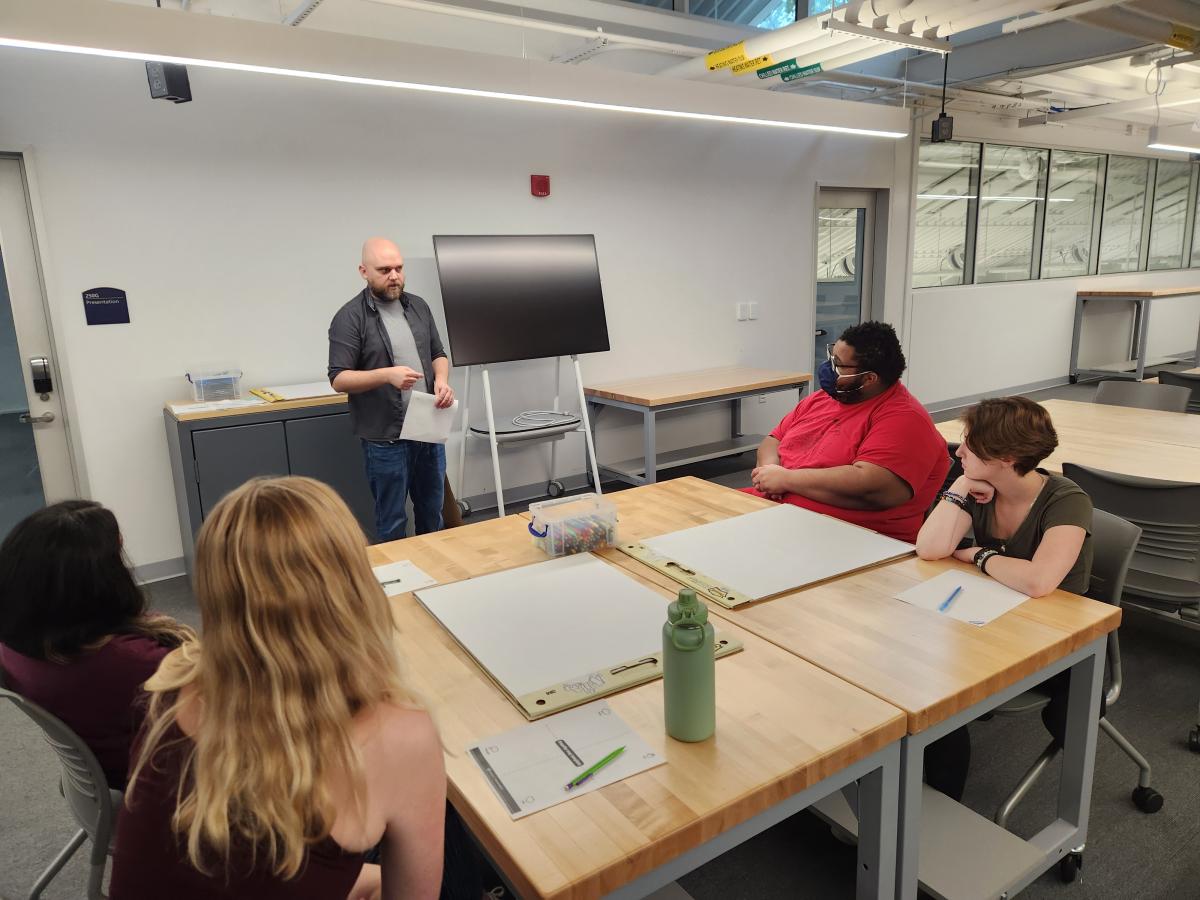
The DI Toolkits are an idea developed by J.R. Campbell, professor, fashion design and merchandising, to “help people think outside the box,” he said. Campbell is the executive director of the Design Innovation Initiative at Kent State. Some of the problem-solving exercises include, for example, the group trying to build a tower out of their shoes or looking at the challenges of public transportation through the eyes of different people in the community.
This semester, Goodman is also working with Syed A.M. Shihab, Ph.D., assistant professor in Kent State's School of Aeronautics, to help a company improve the surveillance system it uses to monitor and control UAVs (unmanned aerial vehicles, or drones).

He said that in making the system reliable, they’re using “the three R’s” of Site Reliability Engineering: Reliability, Robustness and Resilience. “To keep it short, reliability is the probability for a system not to fail; robustness is how well the system can handle any issues and still be able to function at an optimal level,” Goodman said. “Finally, resilience is how fast the system can bounce back from failure.”
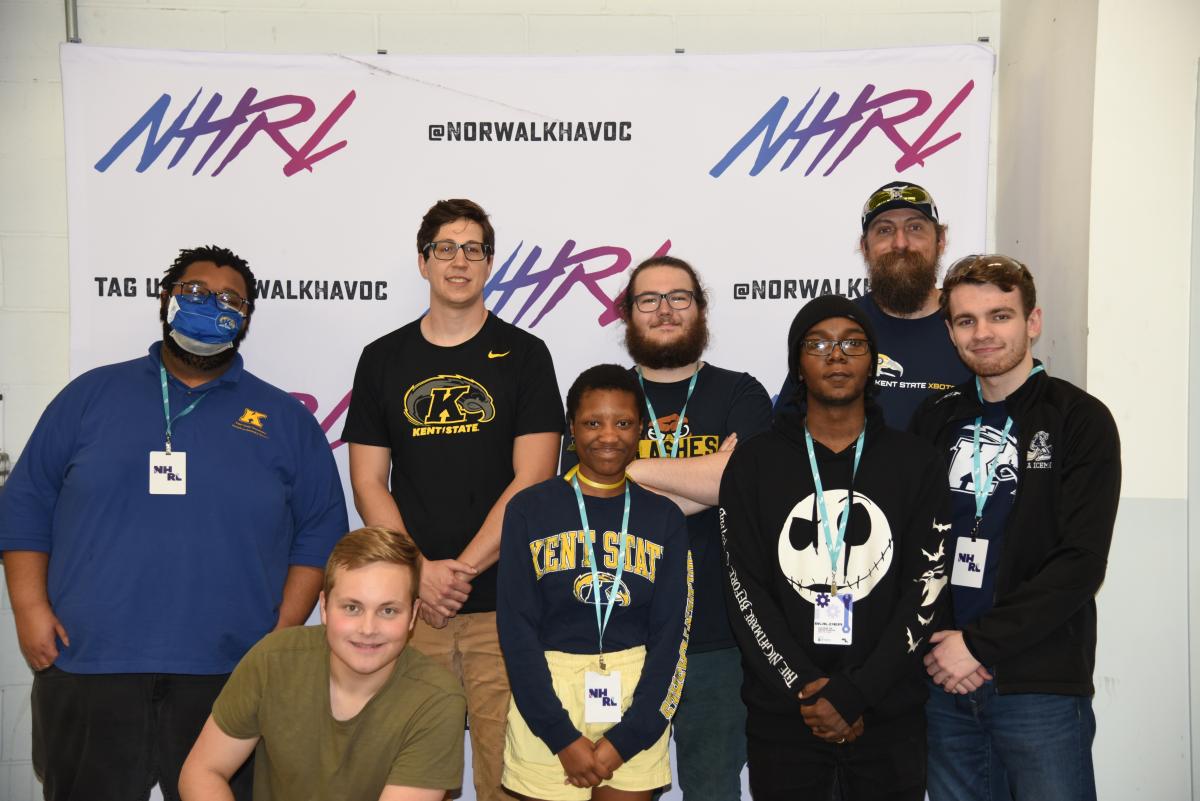
Spring is the Time for Robot Combat
The KSU Combat Robotics Club is planning to have another tournament on campus in the spring. Goodman has a design for a ‘bot he intends to enter in the competition. He hasn’t yet picked a name for the ‘bot, but his design is for what’s called a “flipper ‘bot.”
“The idea of it is that it would essentially use forks to keep other ‘bots at bay,” he said. “That would be really good for vertical ‘bots, with weapons that operate vertically and also have a wedge configuration for horizontal ‘bots.” Goodman said, “The goal is to outdrive my opponent and then just flip ‘em over because some bots may not be able to drive upside down. But usually, if you are meticulous in designing, you design the ‘bot to be able to function both when it is inverted and completely straight.”
‘I’m Not Going to Stop Until There’s a ‘Ph.D.’ Next to My Name’
If all goes according to his plan, Goodman will graduate with a master’s degree in mechatronics in December. He plans to continue in his studies to earn his Ph.D., then work at NASA on a space exploration program and eventually teach at a university. Right now, he said, “‘Professor Goodman’ sounds weird, but I’m not going to stop until there’s a ‘Ph.D,’ next to my name.” He said that with his experience as a tutor and as a teaching assistant, “I have the knowledge that can actually help students.”

“Sometimes, professors may not have a teaching degree or a teaching aspect in their background, so they’ll be really intelligent, but not be able to break down the content,” he said. “I think that with being a tutor and working with students as an undergrad and then being a TA [teaching assistant] as a graduate student, I think that could be useful for the university I teach at to provide better support for students.”

